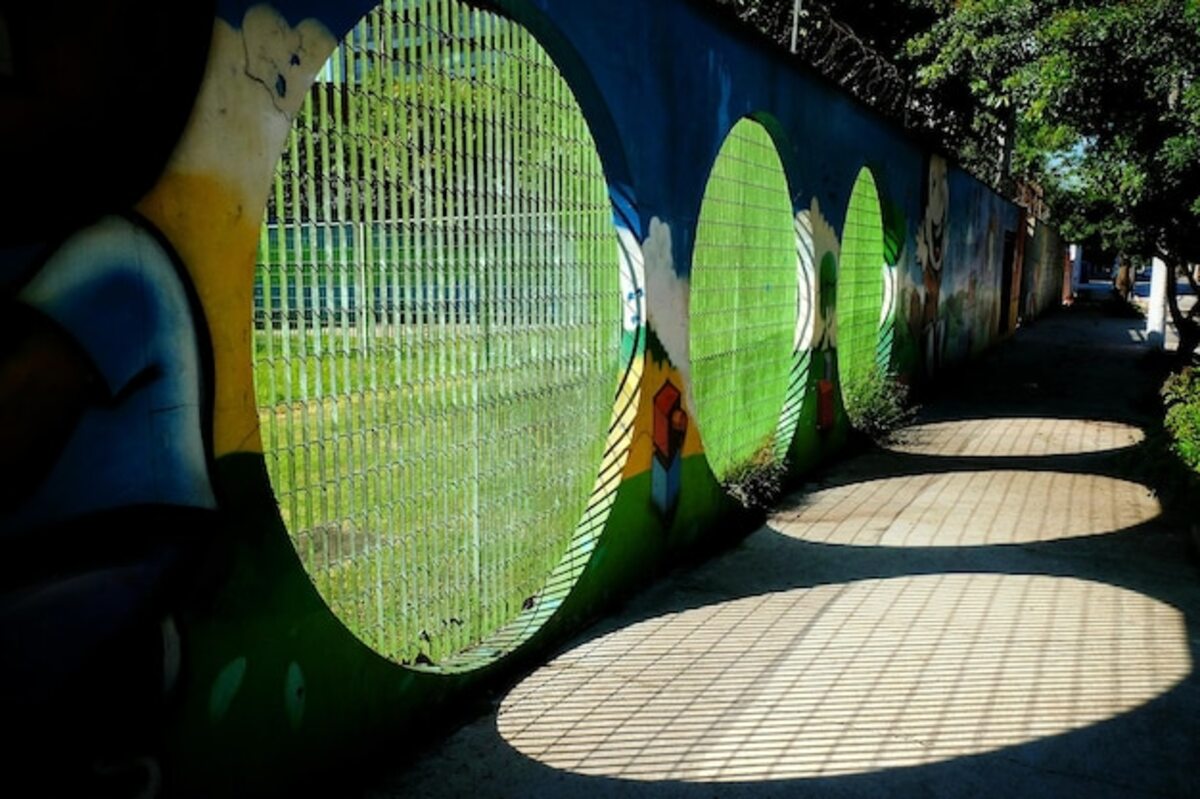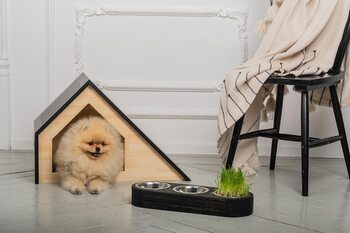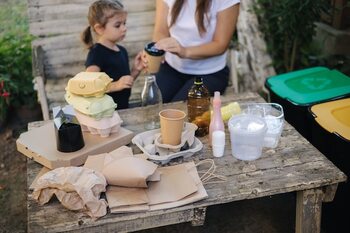Urban spaces: creating a home that nurtures creativity

Urban spaces: creating a home that nurtures creativity
Life in the city presents a unique opportunity to transform our environment into a refuge that inspires and enhances our creativity. In this article, we will explore how to design urban spaces that are not only functional but also foster imagination and well-being. With a focus on aesthetics, comfort, and connection to the environment, you will learn how to create a vibrant home that fits your creative lifestyle. Get ready to discover innovative ideas that will turn your urban space into an inexhaustible source of inspiration.
Life in the city, often marked by a fast pace and population density, offers a unique opportunity to design spaces that not only serve as a refuge but also become a breeding ground for creativity. By integrating elements that stimulate the senses, such as vibrant colors, cozy textures, and inspiring art on the walls, we can transform any urban corner into an oasis of imagination. The key is to understand how each element of the home can resonate with our personality and creative aspirations, allowing each room to tell a unique story that reflects our lifestyle.
In addition to aesthetics, it is essential to consider functionality and well-being when designing our urban spaces. Natural lighting plays a crucial role; maximizing it not only improves mood but also enhances creativity. Incorporating areas dedicated to artistic activities or relaxation can be essential for cultivating an inspiring environment. From cozy reading nooks to well-equipped studios, each space should be designed to adapt to our creative and emotional needs. Thus, a vibrant home is not only built with furniture and decorations but also with clear intentions that nurture our creative essence day after day.
The importance of colors in the creative home
The choice of colors in the home is essential for fostering a creative and stimulating environment. Vibrant shades, such as yellow or sky blue, can evoke feelings of joy and tranquility, while more neutral colors provide a serene space that allows the mind to wander and explore ideas. By integrating a well-thought-out color palette, one can influence mood and productivity, thereby creating an environment conducive to innovation. A home that wisely uses colors not only reflects the personality of its inhabitants but also acts as a canvas for artistic expression.
Additionally, it is important to consider how different spaces within the home can benefit from various color combinations. For example, a home office could benefit from blue and green tones that promote concentration and calmness, while a living room could adopt warm shades like oranges or reds to stimulate social interactions and shared creativity. By designing each area with attention to color, an energetic flow is created that nurtures both emotional well-being and the creative process. Ultimately, understanding the importance of color in urban homes becomes a powerful tool to transform any space into an inspiring refuge.
2. Integration of nature: vertical gardens and terraces
The integration of nature into urban spaces is key to creating a home that not only nurtures creativity but also promotes emotional well-being. Vertical gardens, for example, have become an innovative solution for those who wish to incorporate greenery into environments with space limitations. These installations not only beautify facades and interior walls but also improve air quality, reduce noise, and provide a sense of calm. By cultivating a variety of plants, from aromatic herbs to colorful flowers, an inspiring environment can be created that stimulates creativity and offers an escape from urban hustle.
Terraces are another excellent option to connect the home with nature. Transforming these outdoor spaces into personal oases allows for moments of relaxation and contemplation. With a proper selection of comfortable furniture and natural decorative elements like stones or wood, cozy areas can be designed to enjoy a morning coffee or read a book at sunset. Additionally, incorporating pots with native plants or even small urban gardens can promote not only sustainability but also a deeper connection with the natural environment. Thus, both vertical gardens and terraces play a crucial role in creating urban spaces that nourish both the mind and the creative spirit.
3. Multifunctional spaces: optimizing every corner
In an urban environment where space can be limited, the key to creating a home that stimulates creativity lies in the ability to design multifunctional spaces. These versatile corners allow the same area to serve multiple purposes, from a living room that transforms into an office to a room that also functions as a studio or gym. By adopting this approach, not only is the use of space optimized, but a dynamic and stimulating atmosphere is also fostered, perfect for inspiring new ideas and projects.
The implementation of modular furniture and smart storage solutions is essential to achieve this versatility. For example, folding tables or sofa beds can adapt to different needs depending on the time of day. In addition, incorporating decorative elements that provide functionality, such as open shelves or stackable stools, helps maintain order and aesthetics without sacrificing space. Thus, every corner of the home not only serves its initial purpose but also invites creative exploration and personal development, turning the home into a true refuge of inspiration.
4. Art and decoration: expressing your personality
In a creative home, art and decor play a fundamental role in expressing the personality of its inhabitants. The way we choose to decorate our spaces can reflect our experiences, interests, and emotions. Incorporating artworks, photographs, or personal crafts not only beautifies the environment but also transforms it into a place filled with history and meaning. By selecting unique or personalized decorative elements, every corner becomes an extension of who we are, adding an emotional dimension to our urban home.
Moreover, the choice of colors and textures can profoundly influence our creativity and mood. Vibrant colors can energize a space, while softer tones can provide calmness and serenity. The right combination of these elements not only enhances the aesthetics of the home but also creates an environment conducive to inspiration. Integrating live plants or handcrafted pieces can bring freshness and uniqueness to any room, helping to forge a more intimate connection with the space and thus fostering an environment where creative ideas can flourish.
5. Creative lighting: how it influences mood
Creative lighting is an essential element in any home, especially in urban spaces where the pace of life can be frantic. The way we illuminate our environments not only affects visibility but also our mood and emotional well-being. By opting for warm, soft lights, we can create a cozy atmosphere that invites relaxation and creativity. On the other hand, brighter, cooler lighting can stimulate concentration and productivity, ideal for those moments when we need to focus on creative or work projects. The key is to find the right balance between functionality and aesthetics.
In addition to color temperature, the design of light fixtures also plays a crucial role in how we perceive our environment. Uniquely designed lamps or pendant fixtures can become focal points that not only illuminate but also add a personal touch to the space. The inclusion of adjustable or dimmable lights allows for the creation of different atmospheres depending on the time of day or our activities, thus promoting a versatile home that nurtures our creativity. Incorporating elements like LED strips or lamps with dimmers provides opportunities to experiment with light and discover how it directly influences our emotional state throughout the day.
Finally, it is important to consider the relationship between natural and artificial light. Urban spaces are often limited by their built environment, which can restrict access to natural light. Therefore, maximizing natural sources when possible becomes essential; this includes the strategic use of mirrors to reflect light or choosing lightweight curtains that allow more sunlight in. Complementing these strategies with well-designed artificial lighting transforms an ordinary space into one that is inspiring and full of life. Thus, through creative and intentional lighting, we can cultivate an urban home that truly nurtures our daily creativity and well-being.
6. Modular furniture: flexibility and style
Modular furniture has become an ideal solution for urban spaces, where space is a limited resource and functionality is key. This versatility allows city dwellers to adapt their environments according to their needs and aesthetic preferences. From sofas that can be reconfigured into different formations to shelves that can be expanded or reduced, modular furniture offers the opportunity to customize every corner of the home, thus fostering an environment that inspires creativity and comfort. With intelligent design, this furniture not only saves space but also adds a contemporary and stylish touch to any room.
In addition to their functional flexibility, modular furniture is an expression of personal style. They allow homeowners to play with colors, textures, and combinations that reflect their unique identity. Whether it’s a modular seating system in the living room or a versatile bookshelf in the home office, each piece can be strategically chosen to complement the rest of the environment. In this sense, modular furniture not only serves a practical purpose; it also becomes decorative elements that nurture the creative spirit of urban living, creating a cozy space where ideas flow freely and inspiration is always within reach.
7. Rest areas: cozy corners for reflection
Rest areas are essential elements in any urban home, as they provide a refuge where the mind can relax and the soul can recharge. These cozy corners not only promote introspection but also invite creativity. By incorporating elements such as comfortable armchairs, soft pillows, and good lighting, spaces are created that inspire moments of personal reflection. A reading nook with a well-stocked bookshelf or an outdoor area decorated with plants can become the perfect place to disconnect from the daily hustle and allow ideas to flow freely.
In designing these rest areas, it is important to consider the connection with the environment. Integrating natural materials, soft colors, and pleasant textures helps create a serene and stimulating atmosphere. The use of resources like scented candles or soft music can enhance this sensory experience. Having a space dedicated to pause and meditation promotes not only physical well-being but also mental health, which is essential for cultivating a creative life amidst the fast pace of urban life. Ultimately, these cozy corners are more than just simple rest areas; they are sanctuaries where ideas can flourish and thoughts can take shape.
8. Study at home: designing a productive space
Setting up a home study has become essential for enhancing productivity, especially in a world where remote work and creative activities intertwine. When designing this space, it is crucial to consider elements that foster concentration and the flow of ideas. The choice of furniture, such as an ergonomic chair and a suitable desk, should prioritize comfort and functionality. Additionally, incorporating shelves for books or inspiring materials can help keep creativity organized. Lighting also plays a critical role; a combination of natural and artificial light can create a stimulating environment that supports prolonged work without causing fatigue.
Another important aspect to consider is the personalization of the space. Adding personal touches like artwork, plants, or photographs can make the studio more welcoming and inspiring. The colors used on the walls can significantly influence the mood; soft tones promote calmness, while vibrant colors can activate creative energy. It is also advisable to establish differentiated zones within the same space, such as areas for working with technology and others for manual or creative activities. In this way, not only is efficiency maximized, but a versatile environment is also created that nurtures both work and personal creativity.
9. Community and collaboration: the power of the shared environment
In an increasingly interconnected world, community and collaboration have become fundamental pillars for the development of urban spaces that foster creativity. Interaction among neighbors not only strengthens social ties but also creates an environment conducive to the exchange of ideas and skills. By sharing resources and knowledge, citizens can transform their surroundings into creative laboratories where individual initiatives become community projects. Spaces like community workshops, urban gardens, or collaborative art zones allow people to come together and work together, nurturing a sense of belonging that feeds collective creativity.
The creation of these shared environments goes beyond the simple act of collaborating; it is about building a culture that values diversity and fosters mutual respect. Each individual brings their unique perspective, enriching the creative process and leading to innovative solutions for urban challenges. Furthermore, by actively engaging in their community, individuals develop interpersonal skills and a greater empathy towards those around them. Ultimately, this synergy creates a virtuous circle where mutual support drives not only emotional well-being but also personal and professional growth within the urban home.



